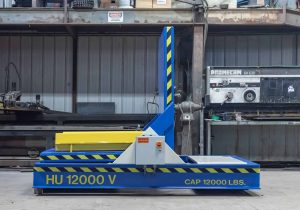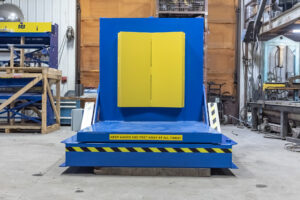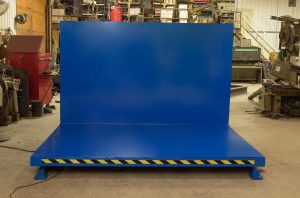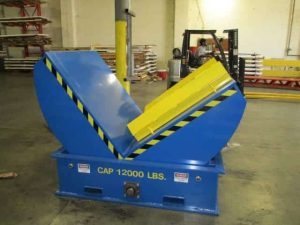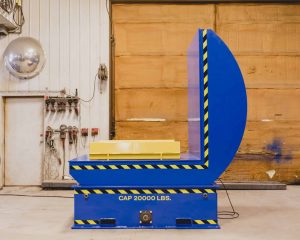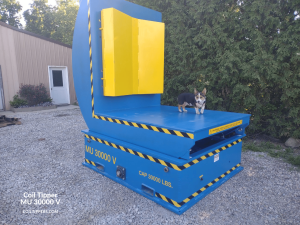The crane market is quickly growing and is expected to reach $54.36 billion by 2028. This growth can be attributed to the fact that cranes are needed everywhere. Any industry that produces goods containing volume or weight most likely uses some variation of a crane. And, like any expanding market, innovations are necessary to improve productivity, operations and safety while also increasing profitability.
Within the manufacturing space, many antiquated processes are not routinely updated. There are a few reasons for this – from the sector historically being slower to adopt newer tech and crane equipment being too costly to update before the end of its lifespan. Recently, we’ve seen various players throughout the crane space rethink these historical processes, offering alternatives to meet employee needs, increase safety and simplify operations. Many of these advancements come in the form of crane radio remote controls – a small but mighty area for innovation.
Implementing a modern radio remote control system is a sure way to drive safety and efficiency for businesses looking to update their crane equipment and processes. Let’s look at a few of the most innovative features moving crane operations forward.
Adaptive Frequency Schemes
Across the manufacturing industry, companies have started adopting frequency scheme management solutions in crane operations. In order to operate a crane, radio systems can choose between a set of frequencies to communicate between the radio and the crane. However, problems arise when multiple radios attempt to transmit at the same frequency simultaneously.
There are various ways to navigate crane frequency channels, starting with the most conventional radio system: a traditional fixed channel. This system relies on a service person who knows which channel each radio operates on within a manufacturing facility and who can manually program them to a set channel. The service technician makes time to go in and set up these channels, which is no longer the norm throughout the industry.
Moving away from the traditional fixed solutions has given way to more innovation in frequency scheme management, including auto-channel selection at commissioning and startup. The commissioning system is used when an operator turns on a radio to connect to the crane the first time. This solution allows the radio to immediately scan all the available free channels and select a channel for all subsequent operations. The startup system is similar, but the channel scanning begins each time the cranes turn on.
The most innovative frequency scheme management system is auto-channel switching in process, an adaptive frequency hopping scheme. As an operator drives a crane and recognizes that the channel, they’re currently using is busy, they can decide to switch to the next clear/available channel to avoid signal collision and downtime.
Improved Ergonomic Design
When deciding between various crane radio remote controls for your business, don’t overlook device ergonomics, flexibility and durability. Crane operators utilize radio remote controls daily, and facility managers must be cognizant of operator needs to retain talent and improve the overall work experience.
Having traditionally used crane pendant control systems, the industry is moving more toward handheld remote controls. These handheld controls provide greater flexibility and ease of maintenance for operators, but ergonomics still play a significant role in employee satisfaction. Because various groups of operators use these radio remotes, suppliers are beginning to consider lighter, more compact handheld remotes that offer shorter finger reach for everyday usage. Better ergonomic design means fewer over-use injuries.
Enhancing Safety Features
One of the most pressing driving forces of innovation in the crane space is the need for greater safety.
Moving away from pendant controls and pushbutton stations increases safety by putting greater distance between the operator and the load itself and allowing for 360-degree visibility. Many safety features are starting to be worked into the radio remote control design to signal to all employees across a manufacturing facility that a crane is in use and simplify operations. These features include lamps, horns, simpler screen interfaces and more.
Innovating with a Complete Solution
In recent years, numerous innovations across the crane industry have challenged the sector to rethink its dated systems and move into the digital age. Crane radio remote systems have made themselves known as the future of the industry, improving usability, safety and overall operator experience. As the industry continues to innovate, it’s important for providers to stay ahead of the curve by anticipating the needs of their end-users and offering the next best thing to keep cranes moving forward. And for users, it’s important to find a complete solution for your business goals.
Sourcing a provider who offers a full suite of radio remote control systems is a primary step in innovating your crane operations. Accurately communicating your facility’s needs will help your provider understand what crane radio remote system you are looking for based on how frequently your radio will be used, what functions you need and what features your operators are looking for. Armed with that information, your radio remote partner can outfit your facility with the best solution for you, and you can begin to reap the benefits of crane modernization.
About Conductix-Wampfler:

